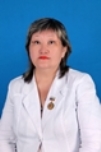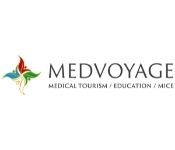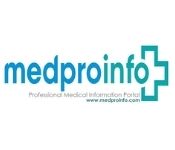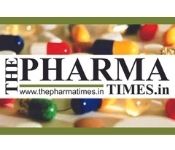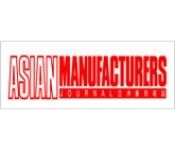Theme: “Recent Developments and Advancements in the Field of Separation Scienceâ€
Separation Techniques 2021
ME Conferences is happy to invite you to the “11th International Conference and Expo on Separation Techniques”, which will be broadcast as a webinar on October 19th, 2021. It will focus on “Recent Developments and Advancements in the Field of Separation Science.”
Separation Techniques 2021 is a global annual conference dedicated to discussing and learning about Novel Separation Techniques in Chemistry, Hyphenated Separation Techniques, Emerging Separation Technologies, Advances in Sample Preparation Techniques, High Performance Liquid Chromatography, and Advances in Chromatography Techniques, Spectroscopy, Basic Separation Techniques, and research in these fields.
In light of this theme, the conference series aims to provide a forum for international researchers from various fields of analytical research, separation sciences, method development, and validation by providing a platform for critical analysis of new data, as well as the sharing of cutting-edge research findings and results on all aspects of Separation Techniques.
Track 1: Novel Separation Techniques in Chemistry
In most Modern Pharmaceutical Techniques, chemical and other process plants, the separation process is an essential unit activity. Among the separation procedures, there are several that are typical and customary, such as distillation, absorption, and adsorption. These procedures are rather common, and the associated technologies have been well-developed and researched. Newer separation methods, such as membrane-based approaches, supercritical fluid extraction, chromatographic separation, and others, are, on the other hand, gaining prominence in modern-day plants as novel separation processes.
- Winnowing
- Sublimation
- Fractional distillation
Track 2: Emerging Separation Technologies
In the important areas of physical sorption, distillation process, membranes, absorption, and heat exchange, there is a growing global interest in step change Separation Technologies. Many of the new research activities are motivated by increased concerns about the environment (e.g. CO2 capture), equipment, and energy costs. Ion-pair-reverse liquid chromatography, Multi-dimensional Separations in 3D-printed devices, Industrial membrane filtration technology, Magnetic Separation Techniques in various fields, Cell Separation Techniques in microbiology, super-critical fluid chromatography (SFC), Hydrophilic interaction chromatography (HILIC), Multidimensional GC separation are some of the new technologies included in this new technology.
- Mechanical separation.
- Solid phase extraction chromatography.
- Magnetic separation techniques.
- Super-critical fluid chromatography.
- Seperation techniques Industrial membrane.
- Microbiology Cell separation techniques.
Track 3: Basic Separation Techniques
The majority of the materials in our environment are a combination of two or more components. There are two types of mixtures: heterogeneous and homogeneous. Heterogeneous mixtures differ from homogeneous mixtures in that their composition is not uniform. Separation Techniques are chosen based on the type of combination and the chemical properties of the constituents in the mixture. This review combines all of the fundamental separation techniques, such as crystallization, distillation, centrifugation, filtering, and others, as well as their improvements.
- Handpicking.
- Threshing.
- Winnowing.
- Sieving.
- Evaporation.
- Distillation.
- Filtration or Sedimentation.
- Separating Funnel.
Track 4: Desalination and water purification
In the conversion of seawater to fresh water, these methods use heat evaporation systems, brine heaters, flash chambers, and high temperature conversion processes. This method necessitated the employment of a diverse spectrum of materials, including copper-based (cupronickels), iron-based (stainless steels), and titanium-based materials. Both the multi-level flash (MSF) and multi-impact distillation (med) methods need a significant amount of money and have large footprints. The membrane technique, also known as opposite osmosis (RO), is a low-temperature, high-strain method for achieving equal endpoints. This is a separation technique utilised in the optimization and purification of potable and drinking waters at the same time. This approach can be modularized or built as a full-scale conversion factory.
- Water supply system.
- Filtration.
- Recycling.
- Desalination.
- Solar-powered desalination unit.
- Disinfection.
- Chlorination.
Track 5: Separation Processes in Chemical Engineering
The chemical, petroleum refining, and materials processing industries all rely on separation procedures, which utilise physical, chemical, or electrical forces to isolate or concentrate specified parts of a mixture. The Separation Process within side the chemical engineering consists of Adsorption, Capillary electrophoresis, Centrifugation and cyclonic separation, Crystallization, Decantation, Distillation, Drying, Electrostatic Separation, Elutriation, Evaporation, Extraction, Field float Fractionation, Magnetic separation, Precipitation, Recrystallization.
- Field flow Fractionation.
- Electrostatic Separation.
- Cyclonic separation.
- Decantation
Track 6: Advancements in Sample Preparation Techniques
Sample preparation's main purpose is to separate one or more target analytes from the remaining components of the sample combination (matrix). If not eliminated prior to analysis, co-components of the sample matrix can have an impact on the quantification of target analyte(s) during subsequent liquid chromatography-mass spectrometry (LC-MS) or tandem mass spectrometry (LC-MS/MS) investigations, depending on their nature and concentration levels. The requirement to consistently attain improved sensitivity and better assay robustness in complex bio fluids such as serum, plasma, urine, oral fluid, or cerebrospinal fluid is making the development of new LC-MS/MS methods for small molecules in biological fluids more hard (CSF). Furthermore, due to the extremely low concentration levels of pharmaceutical targets, samples are frequently pre-concentrated prior to analysis.
- Solid-phase extraction
- Dialysis
- Microwave sample preparation
- Flow injection analysis
- Segmented flow analysis.
Track 7: Crystallography
Crystallography is the study of crystals, which can be found in nature in a variety of forms, from salt to snowflakes to jewels. Crystallographers use the qualities and internal structures of precious stones to determine how iotas behave and provide knowledge that is used by scientists, physicists, and intellectuals. Connected Crystallography is a crystallographic technique that uses neutrons, X-beams, and electrons to examine crystalline and non-crystalline matter. Its applications include consolidated matter research, materials science, and the life sciences, as well as identifying stage changes and auxiliary changes of imperfections, structure-property connections, interfaces, and surfaces and so on.
- The effect of temperature and pressure on the crystal structure of piperidine
- Charge density analysis for crystal engineering
- Topology graphs
- Describing hydrogen bonded structure
Track 8: Separation techniques in food chemistry
Separation technology is widely used in the food business to separate, isolate, and purify a specific component from a mixture. These are necessary in the food production process. Membrane, centrifuge, decanter, spray dryer, freeze dryer, and extractor are just a few of the separation technologies accessible. Membrane technology, in particular, has been widely used in the food sector for the past 5-6 decades due to its lower temperature and energy-intensive processes.
In the food processing industry, pressure-driven membrane separation methods such as Microfiltration (MF), Ultrafiltration (UF), Nanofiltration (NF), and Reverse Osmosis (RO) are extensively utilised. Membrane properties, pore size, and operating pressure differ across these varieties. In the food industry, the dairy and beverage sectors are the most common membrane uses. Microfiltration is a popular method for removing germs and spores, as well as fat and casein, from skim milk. Lactose is removed, and the protein content is increased or decreased, using ultrafiltration. Nano filtration is a technique for concentrating and partially demineralizing liquids. Reverse osmosis is primarily used to remove water from a mixture in order to dehydrate it and improve the product concentration.
- Optimizing the separation of food dyes by capillary electrophoresis
- Pressure-driven membrane separation in the food processing.
- Water in food systems
Track 9: Clinical chemistry, Biomarkers and Diagnostics assays
Clinical chemistry is a branch of clinical pathology that deals with the examination of bodily fluids. The discipline began in the late 1800s with the use of simple chemical assays to detect various components in blood and waste products. Following that, various clinical biochemistry techniques such as spectrophotometry, action, and biological assay were used in conjunction with the use and life of catalyst activities. Endocrine pathology is a branch of surgical pathology that deals with the diagnosis and characterisation of growth and non-neoplastic illnesses of the thyroid, parathyroid gland, secretory exocrine gland, and adrenal glands, among other organs of the system. Pharmacology is also a branch of biological chemistry, and medicine is the study of chemicals' harmful effects on living beings. One of the most popular forms of disease susceptibility is diagnosing, which is an academic degree array of tests performed on excreta. A faecal occult check entails collecting and analysing BM to determine whether or not a medical issue exists.
- Metabolism
- Intoxications
- Biocompatibility
- Prognostic biomarker
- Pharmacologic biomarker
Track 10: Recent Advances in Chromatography-HPLC
The HPLC approach, when used to analyse biological materials, allows for the identification of a wide range of metabolites. High-pressure liquid chromatography–mass spectrometry (HPLC–MS) was used to analyse samples from two human embryo culturing mediums. They are based on the idea that many microorganisms have their own distinct mass spectral signature based on the proteins and peptides present in the cells. Identification of unknown peaks in GC-MS-based discovery metabolomics is difficult, but it is nevertheless necessary to find novel or unexpected metabolites that may be involved in allergy disease processes and/or to improve our understanding of how genotypes affect phenotypes. Here, we'll look at two new technologies and developments in pharmaceutical analytical methodologies that can help with peak detection.
- Hyphenated NMR
- Bio analytical Separations.
- The Metabolomics Study of the Shexiang Baoxin Pill.
- Riboflavin Properties and Determination.
- Forensic Science.
Track 11: Membrane technology in separation techniques
Membrane technologies are increasingly bringing useful components of pharmaceutical manufacturing processes to the surface. For a long time, reverse osmosis, ultra-filtration, and micro-filtration membrane separation technologies have been used to concentrate and purify both tiny and big molecules. Recent technological applications encompass a wide spectrum of separation, concentration, and purification requirements. Pharmaceutical waste streams, for example, can be processed with Nano-filtration or evaporation to detoxify them and/or reduce the amount of trash that needs to be incinerated.
- Distribution
- Pervaporation
- Beverages
- Metallurgy
Track 12: Advance Bio-analytical Techniques
Analytical and Bioanalytical Techniques covers the analytical procedures used to characterise, release, and evaluate the stability of chemical components as well as biotechnological and biological products. The notion of bioanalysis has expanded over the previous two decades into biopharmaceuticals, which includes bigger peptides and proteins. The findings are important for using Analytical and Bioanalytical techniques in clinical and medical processes since Bionalytical techniques revolutionise monitoring of minute quantities of metabolites and their influence.
- Flow cytometry
- Glossary
- Immunogenicity
- Validation of biomarkers
Track 13: Separation Techniques used in Geology / Mineralogy
Mineral ores are one of the most fundamental raw resources that must be cleaned and divided into their mineral forms. The particle sizes, physical qualities, and chemical properties of mineral ore can all be used to separate them. Chemical treatments are used to make separations, which are then subjected to quality control in each sector in order to achieve an economic grade by removing all other contaminants.
- Evolution of the theory of Plate Tectonics.
- Plate Tectonics.
- Intrusive igneous rocks.
- Volcanoes and volcanic rocks
- Chemical composition of the earth's crust
Track 14: Separation Techniques Used In Nanotechnology
Nanotechnology is a new discipline that deals with nanoparticles, and this course provides knowledge on nanotechnology separation techniques. It is a field of research that investigates a new dimension at the nano scale, leading to the development of novel pharmaceuticals, therapies, user-friendly equipment, and technology, among other things. This generation is presently concentrating on Nano and Pico scale research and technologies, which will result in a novel version of science.
- In-vivo Toxicological and Pharmacokinetics
- Nano-Exposure Assessment
- Environmental nano technology
Track 15: Applications of Analytical and Bioanalytical Methods
Bioanalysis is a branch of analytical chemistry that studies the quantitative activity of xenobiotics (drugs and their metabolites, as well as biological molecules in unusual places or concentrations) and biotics (macro and micro molecules, proteins, DNA, giant molecule medicine, and metabolites) in biological systems. The following are some examples of applications for analytical and bioanalytical technique development and validation: biological safety testing, proteomics, compound separation, and drug analysis. Understanding proteomics and food science processes is critical, and it may be described utilising separation approaches.
- Differential proteomics for cancer research.
- PTM analysis and biomarker identification.
- MRM quantification of cancer biomarker proteins.
- OBOC hexapeptide identification.
- Differential proteomics in biofilm formation and evaluation of treatment.
Track 16 : Anaytical Techniques in Immuno Chemistry
Regression Analysis, Grouping Methods, and Multiple Equation Models are examples of analytical approaches that allow researchers to examine complex correlations between variables. Chemistry that focuses on the molecular mechanisms that underpin a system's performance, including the properties of antibodies, antigens, and their interactions. Diagnostic assay, endoscopy, diagnostic imaging, blood tests, and immunochemical assay are the most prevalent diagnostic methods. The bioassay-detected super molecule is frequently referred to as an "analyte" and is, in many situations, a macromolecule. Analytes in biological liquids, such as blood or bodily fluid, are frequently tested using immunoassays for medical and analysis purposes.
- Human Histocompatibility Antigens. ...
- Bacterial Flagellin as an Antigen and Immunogen.
- The Transfer of Immunity with Macrophage RNA.
Track 17: Diagnostic Assays and Test Kits in analytical chemistry
Immuno chromatographic Assays, often known as Lateral Flow Tests or simply Strip Tests, are unit-of-measure immunoassays that are performed on a simple strip format. The amount of your real-time quantitative PCR is extremely accurate and requires less work than existing quantitative PCR methods. Only a small amount of data is required. Adequate sensitivity, large-scale manufacturing ease, temperature stability of the final product (shelf life), Validation and pharmacological development of β -D-Glucan as a Diagnostic Adjunct for Invasive Fungal Infections, as well as Performance in Patients with Acute Myelogenous Blood Cancer.
- Laser spectroscopy
- Surfactants and Detergents
- Chromatographic analysis
Track 18: New analytical Instrumentation and Equipment
The separation of complicated l and natural samples is done using NMR analysis. Recent developments in mass chemical analysis have enabled the analysis of endogenous metabolites to be enhanced. Many issues related to developing High-Performance Liquid Chromatography, electro spray ionisation, and mass chemical analysis methods for targeted metabolomics are discussed here (i.e., menstruation of dozens to many specific metabolites). Lab-on-a-chip devices are a collection of MEMS instruments that are sometimes referred to as "Micro Total Analysis Systems" (TAS).
- Raman Spectroscopy
- Sample Pre treatment
- Elemental Analyzer
- Semiconductor Laser
Track 19: Regulatory Issues and Bio Safety Challenges in Bio analysis
Liquid chromatography-mass spectrometry analysis may be a major analytical technique that combines liquid action's physical separation capabilities with mass spectrometry analysis's mass spectrometry analysis capabilities. The LC-MS technology is used to purify natural-product extracts and novel molecular entities for use in food, pharmaceutical, agrochemical, and other industries. LC-MS is used in drug development research at a variety of stages, including impurity identification, quantitative Bio analysis, and control. Throughout drug development, the FDA has encouraged patients to participate in current quality testing of traditional medicines.
- Economic Regulation
- Aviation
- Food and agriculture
- Decontamination and disposal of infectious material
Conference Highlights
- Novel Separation Techniques in Chemistry
- Emerging Separation Technologies
- Basic Separation Techniques
- Desalination and water purification
- Separation Processes in Chemical Engineering
- Advancements in Sample Preparation Techniques
- Crystallography
- Separation techniques in food chemistry
- Clinical chemistry, Biomarkers and Diagnostics assays
- Recent Advances in Chromatography-HPLC
- Membrane technology in separation techniques
- Advance Bio-analytical Techniques
- Separation Techniques used in Geology / Mineralogy
- Separation Techniques Used In Nanotechnology
- Applications of Analytical and Bioanalytical Methods
- Anaytical Techniques in Immuno Chemistry
- Diagnostic Assays and Test Kits in analytical chemistry
- New analytical Instrumentation and Equipment
- Regulatory Issues and Bio Safety Challenges in Bio analysis
To share your views and research, please click here to register for the Conference.
To Collaborate Scientific Professionals around the World
| Conference Date | October 19-19, 2021 | ||
| Sponsors & Exhibitors |
|
||
| Speaker Opportunity Closed | |||
| Poster Opportunity Closed | Click Here to View | ||
Useful Links
Special Issues
All accepted abstracts will be published in respective Our International Journals.
- Journal of Chromatography & Separation Techniques
- Journal of Analytical & Bioanalytical Techniques
- Journal of Membrane Science & Technology
Abstracts will be provided with Digital Object Identifier by











